Budget-Friendly Kites: Your Ultimate Buying Guide
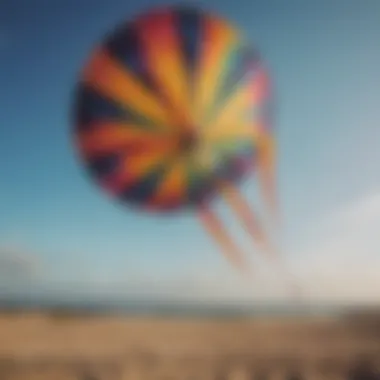

Intro
When the wind whispers sweetly in your ears, there’s little that compares to the sheer joy of flying a kite. It's a pastime that harks back to childhood for many but also strikes a chord with seasoned outdoor adventurers. As enticing as it is to fly high, the costs associated with kites can sometimes bring you crashing back down to earth. This guide is all about shedding light on the budget-friendly options available for enthusiasts and casual flyers alike.
Through this exploration, we'll take you on a journey through various types of kites—each with their materials and distinct features—ensuring you make wise decisions without burning a hole in your wallet. We'll shine some light on reputable brands that deliver good value while comparing prices. By the time the last line is written, you’ll not only have a deeper understanding of kites but also feel educated enough to never compromise between quality and cost.
Our aim? To empower you, the reader, to set sail into the uplifting world of kite flying, all while keeping your budget intact. Let's dive into the nitty-gritty of this beloved pursuit, shall we?
Techniques and Skills
Fundamental Techniques for Beginners
Starting off in the world of kite flying doesn't have to feel like learning to ride a bicycle with only two wheels. It's simpler than it looks, and with a bit of practice, you’ll soon find yourself flying your kite with as much finesse as a seasoned pro. Understanding the basics of wind direction and how to control your strings is key. Here are some initial tips to get you started:
- Choose the Right Kite: Opt for a beginner-friendly kite, typically a delta kite or a box kite, as they tend to be easier to manage.
- Wind Awareness: Pay attention to the wind conditions—avoid flying during gusty winds to prevent unwanted crashes.
- Launching: Face the wind, hold your kite up at an angle, and release gently while letting the wind do the work.
- Wind Control: Pull on the string to increase height, and let it out a little to stabilize.
- Practice Turns: Make gentle movements with the string to navigate left and right, following the wind flow.
Advanced Skills for Experienced Athletes
Once you’ve got the basics down, there’s a whole world waiting for you filled with thrilling tricks and advanced maneuvers. Experienced kite flyers often find joy in performing stunts or even competiting in events. Depending on the type of kite, the skills can vary significantly. Here are a few skills to strive for:
- Stunts and Tricks: Learn to perform flips, spins, and dives that can leave onlookers in awe.
- Dual and Quad-Line Control: Mastering control with two or four lines can give you an edge in precision flying.
- Kite Racing: Compete against fellow kite enthusiasts. It’s all about speed and agility.
- Kite Building: Once you’re comfortable, consider crafting your own kite tailored to your flying style.
Building skills and techniques not only amplifies your enjoyment but also opens up a community of fellow enthusiasts who share the same passion.
Safety and Gear
Essential Safety Measures in Watersports
Kite flying, while exhilarating, should always be approached with safety as a top priority. Whether landed on a beach or an open field, consider the following safety tips:
- Awareness of Surroundings: Be mindful of people, animals, and any structures when flying.
- Weather Check: High winds or storms are a no-go for flying. Always be vigilant about weather conditions.
- Use Safety Gear: Consider wearing gloves to prevent rope burns and a hat to protect yourself from the elements.
Gear Reviews and Recommendations
Selecting quality gear helps in enhancing your kite-flying experience. Here's a glimpse into some budget-friendly kites that maintain quality without breaking the bank:
- Eddy Kites: Known for their resilience and ease of use, ideal for beginners.
- Prism Synchro: Excellent for advanced users, these dual-line kites offer great control.
- In the Breeze: Offers a wide array of colorful options that are durable and relatively affordable.
In assessing gear, always read reviews from fellow kite flyers found in forums like Reddit to get firsthand experiences and recommendations.
"The sky isn’t the limit; it’s just a launching pad for your dreams. Kite flying takes a simple joy and elevates it to new heights, literally!"
With solid techniques and safety measures in place, you're now equipped to explore this wonderful world of kites. Get ready to find the perfect budget-friendly gear to start your adventure!
Types of Kites Available
The world of kites is as varied as the skies they soar through. Understanding the different types of kites isn't just a matter of aesthetics; it's crucial for anyone looking to find the right fit for their kite-flying needs, especially when working with a budget. Different kites can offer distinct flying experiences, ease of use, and performance capabilities. Thus, knowing the characteristics and benefits of each type can help enthusiasts and casual users make informed choices. This section scratches the surface of the various kite types, helping you narrow down what suits you best.
Single-Line Kites
Single-line kites are often the first choice for many novice flyers. Easy to use, they require little setup—just attach the string and off you go. These kites are ideal for gentle breezes and mellow flying days, making them perfect for families. The simplicity of single-line kites means they are generally lightweight and can soar high without the need for complex controls.
- Benefits:
- Effortless to launch and control.
- Inexpensive and widely available.
However, if you seek thrill and agility, you might find single-line kites lacking in excitement.
Dual-Line Kites
Next up are dual-line kites, which open up a whole new world of maneuverability. These kites allow for more precise flying control since you can steer them using two lines. This feature lets experienced fliers perform tricks and stunts, adding layers of enjoyment. The complexity increases, of course, but so does the reward. Strapped to your hands, a dual-line kite can dance in the breeze, performing twists and turns that exhilarate its pilot.
- Key Aspects:
- Offers enhanced control and responsiveness.
- Requires more skill and practice to master.
While they tend to cost a bit more than single-line options, their dynamic flying abilities often justify the price.
Quad-Line Kites
If you're seeking unparalleled precision in the skies, quad-line kites are the holy grail. With four lines, these kites offer the ultimate in control. You can maneuver them with such finesse that they become almost an extension of yourself. Perfect for trick flying enthusiasts, they take time and practice to master, so don't be discouraged if you don’t get it right away. Expect to invest more—both in time and money—if you want to delve into the world of quad-line kites.
- Pros:
- Exceptional control and trick potential.
- Unique flying experiences, especially in dynamic wind conditions.
Most budget-friendly options may not fully capture what you can achieve with higher-end versions, but many decent quad-line kites exist for the budget-conscious.
Box Kites and Their Variants


Box kites have a unique design, resembling a three-dimensional box, which gives them exceptional stability. They are particularly effective in light winds, making them a good option for those calm days. Box kites can often be found at lower price points, making them an attractive choice for those exploring kite flying without wanting to break the bank.
- Notes:
- Their structure can capture wind from various angles.
- Great for learners who enjoy a stable flying experience.
If you're aiming for something that performs well with less hassle, box kites rightly fit the bill.
Foil Kites
Lastly, we have foil kites. Unlike the traditional rigid kites, foil kites are essentially fabric with air chambers that inflate when flown. They are great for beginners and allow for a smoother flying experience. Not only do they take less time to set up, but they also tend to be lighter which makes them easier for users of all ages.
- Considerations:
- Generally more affordable than many other types.
- They lack the sturdy frame, so care is needed during transport and storage.
Foil kites can be excellent for recreational flyers who just want to enjoy a peaceful day in the park without too much fuss.
In summary, knowing these kite types can vastly enhance your kite flying experience, especially if you're on the lookout for bargains. Each type has unique advantages, positioning them differently in terms of ease of use, performance, and investment. Choose wisely based on your needs and the winds that beckon!
Material Considerations
When selecting kites, material is a crucial component. It influences a kite’s performance, its longevity, and of course, its overall cost. Understanding the types of materials used in kite construction can turn the tide—from a forced decision based on price to an informed choice that considers performance and lifespan. Let’s delve deeper into what to look out for when weighing the materials in budget kites.
Fabric Types and Their Costs
The fabric of a kite forms its outer layer and plays a massive role in how well it can take to the skies. Common materials include polyester, nylon, and ripstop variations. Each has its own price tag attached, influenced by the weaving techniques and finishes.
- Polyester: Affordable and readily available, polyester is popular among budget-friendly options. It holds color well and withstands sunlight decently. A typical polyester kite might range between $15 to $40.
- Nylon: Generally more lightweight and durable than polyester, nylon kites often come with a higher price. Expect to pay between $30 and $70 for this fabric type. It’s excellent for higher wind speeds due to its flexibility.
- Ripstop Fabrics: These come in both polyester and nylon, but have a special reinforcing technique that minimizes tears. Though they may be pricier, the investment can pay off in the form of reduced damage during high winds.
Frame Materials: Impact on Price
The frame of a kite supports its structure and contributes significantly to its performance. Materials, which range from fiberglass to carbon fiber, each carry different costs and characteristics.
- Fiberglass: Affordable and flexible, fiberglass frames are common in entry-level kites. They offer a good balance between weight and strength, often found in kites priced from $20 to $50.
- Aluminum: A step up in terms of durability and weight, aluminum frames tend to be found in a higher price range, generally between $50 and $100. They are less prone to bending compared to fiberglass, making them a popular choice for more serious kite fliers.
- Carbon Fiber: On the high end of the spectrum, carbon fiber frames provide superior strength-to-weight ratios. Kites with carbon fiber frames start at around $100 and go upward, suited for enthusiasts who demand performance and longevity.
Durability vs. Affordability
When shopping for budget kites, a balancing act presents itself between durability and affordability. It’s almost like walking a tightrope. On one hand, cutting corners to save money may lead you to a kite that won’t last through one windy day at the beach. On the flip side, investing a bit more could mean you’re looking at a kite that performs better and enjoys a longer life.
- Quality Materials: Yes, higher-quality materials cost more upfront, but consider this: a well-constructed kite with durable materials may save money in the long run on replacements. It’s all about weighing immediate costs against future expenses.
- Flight Conditions: Kites geared for calmer conditions can afford to be on the less durable side. If you fly in variable weather or stronger breezes, investing in sturdier materials certainly pays off.
Ultimately, the decision on which kite to select hinges on the usage scenario. Know your environment, and be honest with yourself about your expectations. Do you want a kite just for the occasional backyard fun, or are you gearing up for beach bends and aerial tricks?
"A penny saved might be a penny earned, but in kite flying, a little more spent can sometimes mean a lot more fun."
With these material considerations in mind, you can move forward knowing the fabrics and frames that mesh best with your kite-flying ambitions while keeping costs in check.
Key Features of Budget Kites
When it comes to exploring the realm of budget kites, understanding the key features becomes paramount. Many kite enthusiasts often find themselves in a quandary when selecting their perfect kite, particularly when working within a budget. It’s essential not just to hunt for lower prices, but to also ensure that the selected kite meets basic functional and performance standards. Let’s delve into some fundamental aspects that can make a significant difference in your kite flying experience.
Ease of Assembly and Portability
One of the first things you might notice with budget kites is how user-friendly they can be. An easy assembly process is often a critical feature for casual users who may not want to wrestle with complicated instructions when all they want is to experience the joy of flying a kite. Many budget-friendly kites are designed to be set up in mere minutes. Look for features such as pre-attached lines or well-designed frame structures that snap together simply.
Furthermore, portability is another essential aspect. A kite that folds down compactly and is lightweight makes it much easier to bring along to the local park or beach. This means you'll spend less time fumbling around and more time enjoying the thrill of flying. Whether it’s a robust beach day or a simple outing, having a kite that you can toss into a backpack with ease enhances the whole adventure.
Wind Range Capabilities
Budget kites often have specific wind ranges they are optimized for, so it’s crucial to understand this feature. Some kites work well in light winds, while others thrive when conditions are blustery. For example, a simple foil kite might perform beautifully on days where the wind is gentle, perfect for beginners. On the flip side, dual-line kites might require a bit more wind to reach their full potential.
Knowing the wind speed conditions for which your kite is designed can greatly affect your flying experience. Here’s a point worth noting: Always check the manufacturer's recommendations regarding wind range before making your purchase, as this creates a substantial impact on how enjoyable your kite sessions will be.
"For every kite, there’s a wind. Knowing your kite’s preferred breeze is half the fun!"
Stability and Performance
When discussing key features, stability and performance are first and foremost on the list. Budget kites shouldn’t just be cheap; they should also provide an adequate balance of stability as this is what allows the flyer to execute maneuvers smoothly. Many budget kites are built with stability in mind, often featuring wider wingspans or specific designs that reduce the likelihood of flipping over in turbulent winds.
Performance can vary widely not only with brand but also with design. A good budget kite will rise swiftly into the air and hold its position without constant adjustments from the user. Features like adjustable tail length or specific wing shapes can help enhance this, contributing to overall control. Finding a kite that strikes the right balance between price and functional performance is vital for both enjoyment and learning.
In summary, understanding the key features of budget kites equips you with the knowledge to make smarter purchasing decisions that align with your flying preferences. Being mindful of assembly ease, proper wind range, and stability can lead to a fulfilling kite-flying experience without breaking the bank.
Comparative Pricing Analysis
Exploring budget-friendly kites necessitates a keen understanding of comparative pricing analysis. Why does this matter? Well, selecting the right kite on a budget can save you not just dollars, but also frustration and time. Different brands offer varying price points, and knowing where to look can uncover those hidden gems that provide great value without breaking the bank.
"It's not about how much you spend, but what you get for it."
When you scrutinize the pricing options, you begin to see patterns. Some brands position themselves as economical while ensuring quality. Consider factors such as the kite's design, material, and performance capabilities. Not all kites marketed as budget-friendly provide the same flying experience—or durability.
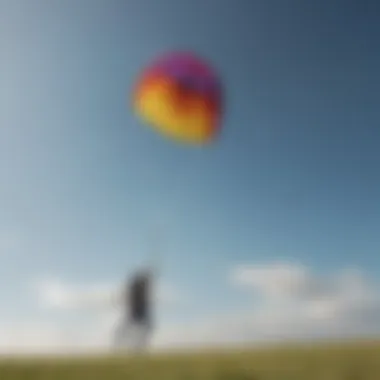
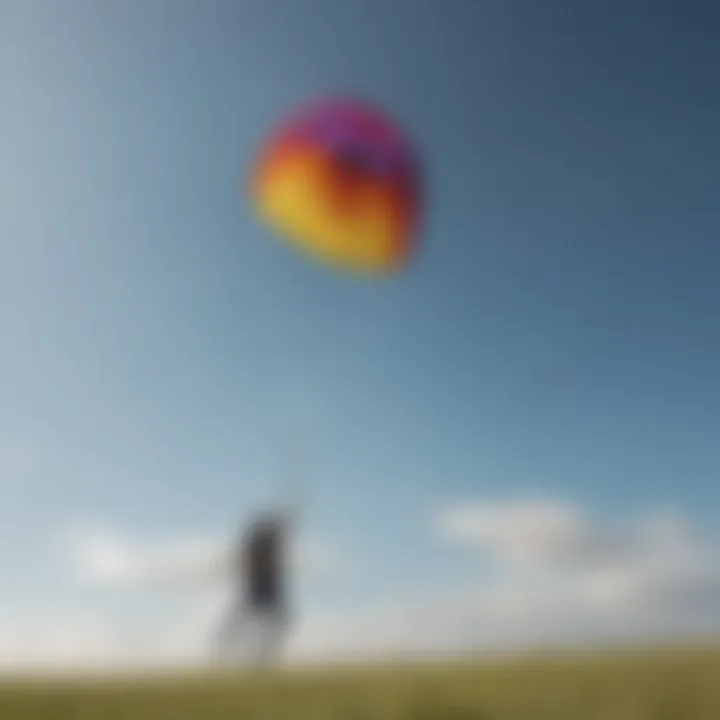
Economical Options From Various Brands
Many brands cater specifically to budget-conscious consumers while maintaining a decent level of quality. Some notable names in the affordable kite market include:
- Peter Lynn: Known for their dual-line kites that balance cost with performance, suitable for both beginners and intermediates.
- Prism Designs: Offers a great selection of single-line kites that are inexpensive yet highly colorful.
- In the Wind: Their box kites are ideal for those wanting a unique shape without a hefty price tag.
Each brand has its unique features and character—some may be more durable while others excel in ease of use. It's like comparing apples to oranges; they might both be fruits, but their values differ.
Setting a Budget for Kites
Determining how much you’re willing to spend upfront makes a big difference. Set a realistic budget based on your needs. For example, if you're just planning to fly on a windy day at the park with kids, a simpler and less expensive model might do the trick. Consider the following:
- Beginner Kites: Ranging from $10 to $30 are perfect for casual flyers.
- Intermediate Kites: Often priced between $30 and $80, these offer more performance and can last longer.
- Advanced Kites: Priced above $80, these are tailored for enthusiasts who seek specific functions.
Budgeting helps narrow down choices and prevents overspending on expensive features you may not need.
Where to Find Discounts and Deals
If you know where to look, discounts can turn a mediocre deal into a fantastic one. Online marketplaces frequently offer sales, especially during off-peak seasons. Check websites like eBay or specific kite retailers for seasonal discounts.
- Local Outdoor Stores: Checking brick-and-mortar shops can unveil clearance sales—who doesn’t love a good in-store bargain?
- Kite Festivals: Sometimes these events throw retail specials; sponsors might offer promotions for new models or older stock.
- Social Media and Forums: Platforms like Reddit or Facebook groups dedicated to kite flying often share trade or buy/sell opportunities, which might lead to great deals without the premium tag.
Remember, a good deal isn’t simply about the cheapest price but about value. Think ahead about how much usage you might get out of your kite. Balancing price with utility ensures you’re not just penny wise and pound foolish.
Top Budget-Friendly Kite Brands
Kite flying can be an enjoyable and stress-relieving activity, but the costs can sometimes put a damper on the fun, particularly for those venturing into the sport without prior experience. This section emphasizes the significance of finding budget-friendly kite brands that strike a balance between affordability and quality. An economical kite doesn't necessarily mean it has to compromise on performance, and this notion is quite crucial for those seeking to maintain a quality flying experience while sticking to their budget.
Brand A: Overview and Offerings
Brand A is renowned for producing kites that are both user-friendly and pocket-friendly. They specialize in a wide range of kite types, from simple single-line designs to more elaborate stunt kites. Their offerings are tailored for both beginners trying to avoid budget pitfalls and seasoned flyers looking for reliable options.
The main offerings include:
- Single-line kites that provide ease of use, often complete with vibrant colors that attract the attention of the most discerning kite enthusiasts.
- Dual-line kites designed for tricks and stunts, giving more experienced users the thrill they crave.
Affordability is a hallmark of Brand A; many of their models can be found for as little as $20. Keeping customer satisfaction at the forefront, they also provide a 30-day money-back guarantee, ensuring buyers are never left high and dry.
Brand B: Features and Price Point
Brand B takes pride in delivering kites that maximize performance without stretching the wallet. Their products are famous for their sturdiness and reliable wind capabilities, making them great choices for those planning outings on less-than-ideal days.
Some notable features include:
- Reinforced seams and heavy-duty materials that endure varied weather, emphasizing durability that stands the test of time.
- Affordability, with prices starting around $25. This is especially beneficial for families who might want to purchase multiple kites.
Brand B also offers a variety of accessories, such as specialized strings and bags, enhancing the kite-flying experience beyond just the kite itself. This holistic approach to budget kites resonates well with outdoor adventurous spirit, making them a strong contender in the market.
Brand C: Customer Feedback Summary
When it comes to Brand C, what sets them apart is how they engage with their customers. They welcome feedback, creating a community where users can share insights about their kite-flying adventures. Many customers praise Brand C for their intuitive designs and affordability, cementing their relevance in this budget-friendly niche.
Here's a quick summary of customer sentiments:
- Positive Feedback: Customers appreciate the easy assembly process, enabling beginners to jump right in without feeling overwhelmed.
- Suggestions for Improvement: Some users have pointed out that while the kites are affordable, certain models could benefit from additional customization options. In general, users express satisfaction with the balance of cost and reliable performance.
"Brand C has captured the essence of what it means to enjoy flying kites without breaking the bank. Many of us just want simple fun—and they deliver."
User Considerations When Choosing a Kite
Choosing the right kite involves more than just picking a flashy design or a low price tag. For any kite flyer, understanding their own needs is crucial. Whether you’re a seasoned flyer or just dipping your toes into this delightful hobby, several factors come into play when selecting a kite. This section helps you navigate those choices with clarity and purpose, focusing on three main areas: experience level, intended use, and personal considerations.
Experience Level and Kite Selection
Your experience level can significantly influence the type of kite you should choose. If you’re a beginner, a simpler single-line kite may be your best bet. These kites are often easy to fly, allowing new enthusiasts to gain confidence in keeping the sail aloft without the complexities of maneuvering it.
On the other hand, if you’re a seasoned flyer, you might be itching for a dual-line or quad-line setup. These kites offer more control and can perform impressive tricks in the sky, perfect for those who relish the challenge of kite flying.
Key Points to Consider:
- Beginner: Opt for simpler, user-friendly options.
- Intermediate to Advanced: Seek kites that offer dual or quad-line control.
- Skill Development: As you gain experience, gradually transition to more advanced models to enhance your flying skills.
Intended Use: Recreation vs. Competition
The purpose for which you plan to use your kite plays a pivotal role in your selection process. Are you looking to fly for fun or aiming for a competitive experience? For recreational use, options like bright, visually appealing foil kites might tickle your fancy. They are great for picnics in the park and family outings by the beach.
However, if competition is your goal, you’ll want something more refined, with specific features that contribute to performance. Competitive kites often need precision engineering, ranging from advanced materials to specialized designs that allow for impressive speed and agility during flight.
Considerations:
- Recreational: Look for bright colors, easy assembly, and overall simplicity.
- Competitive: Prioritize functionality, performance metrics, and materials that enhance agility.
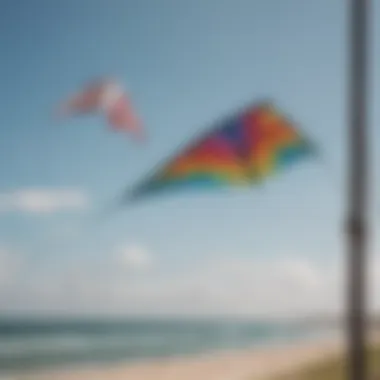
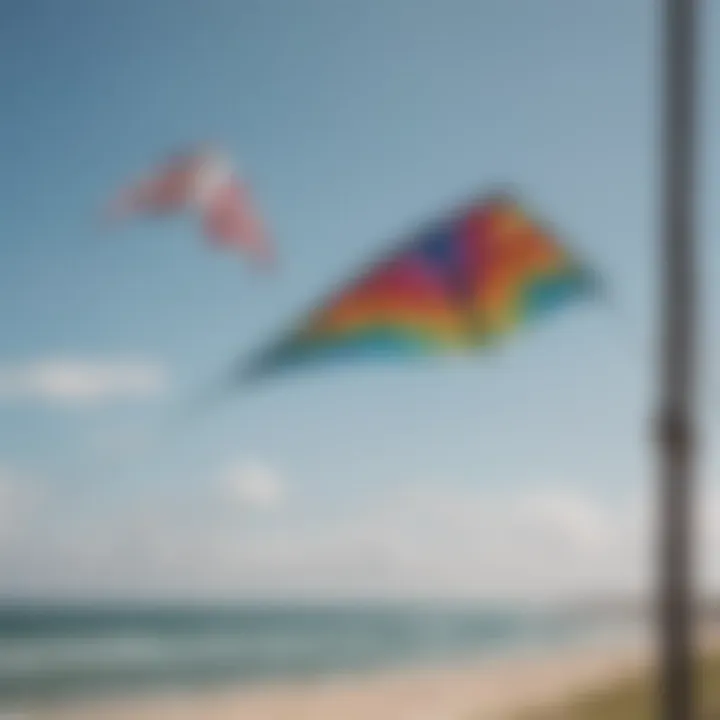
Age and Physical Considerations
Age and physical capacity are also critical factors. For children, lightweight kites made from durable materials are generally better. They need to handle tough landings and rough conditions, while still being easy enough for little hands to manage. Parents should ensure these kites are safe and age-appropriate, steering clear of overly complex options that might frustrate young flyers.
For adults, personal health and physical capability come into play as well. If you have a certain level of mobility or strength challenges, it may be wise to choose kites that are not too heavy or cumbersome to setup. Simple designs with straightforward instructions will be less irritating during family outings.
Important Aspects
- Children: Lightweight and durable kites are suitable.
- Adults: Choose kites that correspond with physical capabilities and ease of handling.
Ultimately, the best kite is one that aligns with your skills, your goals, and your individual circumstances. Each kite is a ticket to a world of adventure, but choosing wisely can enhance your experience to the fullest.
Maintenance and Care of Budget Kites
Taking care of your budget kites is not just a good idea, it’s essential. Maintaining kites properly can greatly enhance their lifespan and performance. A well-kept kite can remain usable for many years, giving you more flying time for your dollar. Furthermore, proper maintenance prevents minor issues from becoming major headaches. With a few simple practices, you can keep your kite in excellent condition while also enjoying your outdoor adventures.
Preventive Maintenance Tips
Preventive maintenance often goes a long way in ensuring that your kite remains functional. Here are some useful tips:
- Inspect Regularly: Before flying, take a moment to check for any visible damage. Look for tears in the fabric, loose lines, or bent frames. Catching problems early can save time and money.
- Clean After Use: Sand, dust, or moisture can accumulate on your kite after a day of flying. It’s a great practice to lightly brush off any debris using a soft cloth or brush. This helps to prevent future wear and keeps the kite looking new.
- Avoid Harsh Weather: While it can be tempting to fly your kite during an unpredictable storm, be cautious. Strong winds or rain can damage both the fabric and frame. Always check weather conditions before taking off.
Repairing Minor Damages
Inevitable as it may be, damages do occur. Knowing how to handle minor repairs can save both time and frustration:
- Sewing Small Tears: If you spot a small tear in the fabric, a quick stitch can be all it takes. Use heavy-duty thread and a needle designed for outdoor fabric.
- Patch Kits: Many budget kites come with a patch kit. If not, consider purchasing one. It can help you quickly fix larger damages, ensuring your kite isn’t grounded for long.
- Reinforce Weak Spots: Pay attention to the areas of your kite that endure the most stress—patching these areas preemptively can prevent bigger issues later on.
Storage Practices for Longevity
How you store your kite also impacts its longevity. Proper storage can prevent issues caused by moisture and sunlight. Below are some key storage practices:
- Use a Storage Bag: Most kites come with a storage bag which can stop dust from accumulating and protect from sunlight. Ensure the kite is completely dry before putting it away.
- Storing in a Cool, Dry Place: Avoid leaving your kite in a damp garage or hot attic. A cool, dry spot reduces the risk of mold and preserves the materials better.
- Keeping the Kite Flat: If possible, lay your kite out flat when storing it. Avoid folding; this helps in maintaining the shape and reduces stress on the fabric.
Remember, taking the time for maintenance and care ensures that your kite remains a reliable companion on your adventures. It’s better to spend a few minutes on care than to be faced with an unusable kite when the wind is just right!
Safety Guidelines for Kite Flying
When it comes to kite flying, safety should always be top of mind for enthusiasts and novices alike. Ensuring safe practices not only protects the person flying the kite but also those nearby, including other kite flyers, pedestrians, and property owners. With kites soaring high in the sky, a few simple safety guidelines can go a long way in avoiding accidents and enjoying the experience thoroughly.
Understanding Wind Conditions
Knowing the wind conditions is crucial for a successful and safe kite-flying session. Winds can be unpredictable and greatly influence the stability of your kite. Ideally, a steady breeze of around 5 to 20 mph is perfect for most kites. If the wind is too light, your kite may not fly well. Conversely, strong gusts can turn a fun day into a dangerous one with the risk of losing control.
Understanding signals from nature helps as well. Watch for tree movements, or check the flags at a nearby sports field. Wind shifts can happen suddenly, and being in tune with your environment can keep you on your toes.
Tip: If you’re uncertain, checking local weather reports or using wind speed apps can provide valuable insights.
Avoiding Hazards: Power Lines and Trees
Every kite flyer should keep a keen eye out for potential hazards like power lines and trees. These towering structures can snag a kite, causing it to crash and potentially lead to dangerous situations. You also don’t want to end up tangled in a power line—electricity and kites do not mix well.
Know your surroundings before you launch. If you see a cluster of power lines or large trees, steer clear or choose a different spot for flying.
Here are some steps to take to minimize these hazards:
- Fly your kite in open spaces away from urban environments.
- Always have a buddy or spotter to keep watch.
- Use a long line for kites so you can stay at a safe distance.
"A little caution can save you a big headache later on."
Best Practices for Safe Flying
Following a set of best practices can dramatically enhance the safety of kite flying. These guidelines ensure that everyone can enjoy the beauty of kites dancing in the sky without worry.
- Choose Appropriate Locations: Parks, beaches, and fields are ideal spots. Aim for areas with few people and obstacles.
- Supervise Children: Kids love flying kites, but they should always be supervised to prevent unintentional accidents.
- Respect Others: Keep a safe distance from other kite flyers, ensuring everyone has enough space to maneuver safely.
- Pack Up When Necessary: If conditions worsen, or when the wind becomes too fierce, it's time to call it a day. Don't push your luck.
Adopting these simple yet effective safety guidelines will not only make your kite-flying endeavors more enjoyable but can also foster a sense of community among fellow kite enthusiasts. The skies are full of possibilities, and with a bit of foresight, everyone can join in the fun without danger.
Final Thoughts on Affordable Kites
In a world where recreation can often break the bank, finding budget-friendly kites offers not just a solution, but also an invitation to experience the joy of flying without heavy investment. The dialogue surrounding affordable kites emphasizes a few central truths: you don’t need to shell out big bucks to have a stellar time outdoors, and at times, the simplest kites can provide the most memorable flying experiences.
Balancing Cost and Quality
The art of balancing cost and quality becomes crucial while diving into the realm of economical kites. The reality is, not every budget kite compromises performance or durability. Several economical options outperform their price tags. When considering kites, think critically about what really matters for your intended use.
- Material Quality: Even low-cost kites can deliver adequate material quality. Check if they utilize durable yet lightweight fabrics. A well-constructed kite using fabrics like nylon might withstand a windy day much better than a flimsy polyester one.
- Construction Durability: A kite's frame plays a pivotal role. Look for kites with strong yet lightweight materials such as fiberglass. They tend to be resilient, meaning fewer breaks and improved longevity.
- User Reviews: Often, users provide detailed feedback post-purchase. Take note of comments that praise performance despite the low cost. They can serve as valuable indicators and lead you to hidden gems in the market.
Fostering a blend of expectations might just enhance your kite flying escapades, offering affordability without sacrificing the fun.
The Value of a Good Kite Experience
Every outing with a kite has the potential to morph into a cherished memory. The notion of a 'good kite experience' transcends just the physical act of flying; it's about connecting with nature and finding joy in simple, playful activities. Engaging with a budget-friendly kite means that more families and individuals can access this delight.
It's essential to grasp the nuances of why kite flying matters:
- Connection with Nature: A well-spent day with a kite encourages one to be outdoors, reveling in the fresh air and enjoying the beauty of the sky. It strengthens bonds among family and friends, sharing laughter and excitement as the kite soars higher.
- Skill and Patience Development: Flying a kite isn’t solely fading away into the background; it requires skill, patience, and sometimes, a few failed attempts. Learning this can be a rewarding experience, especially for children, fostering a spirit of perseverance.
- Community Engagement: Kite flying has an inclusive culture. It brings people together, whether in local parks or at events. Meeting fellow kite enthusiasts and sharing tips can enrich one’s experience.















